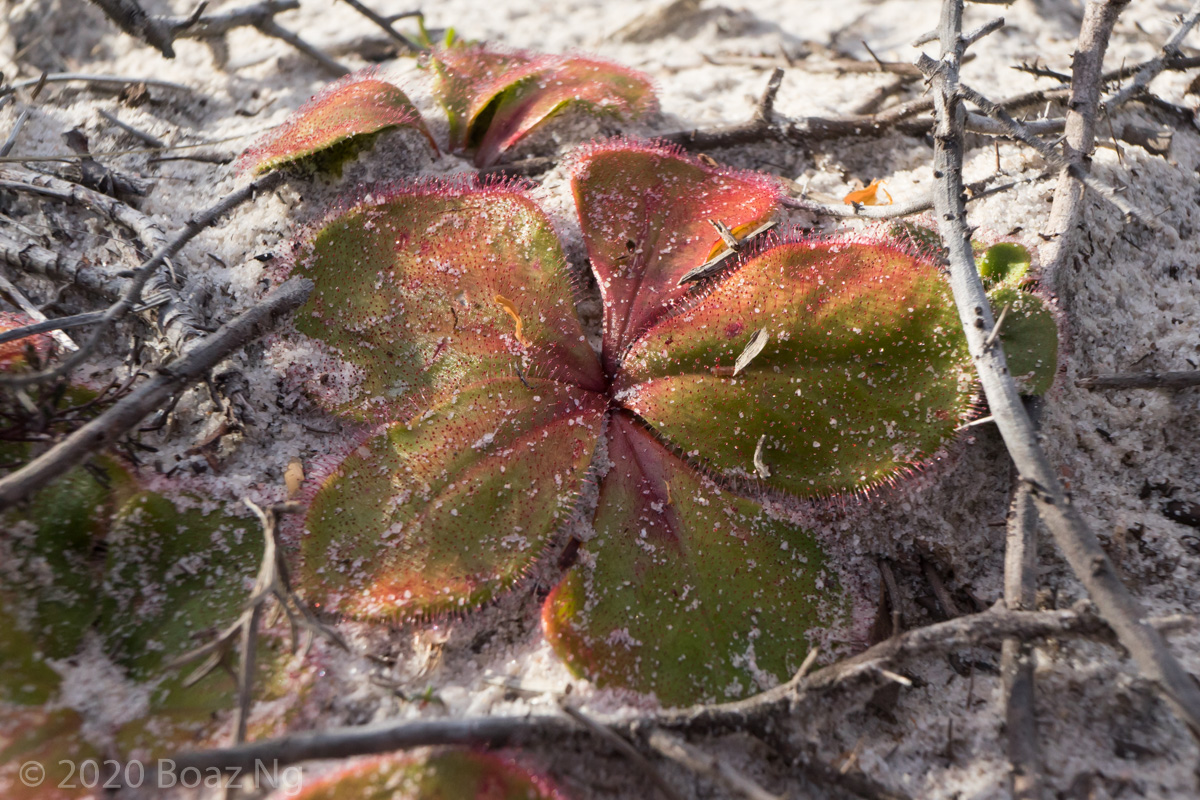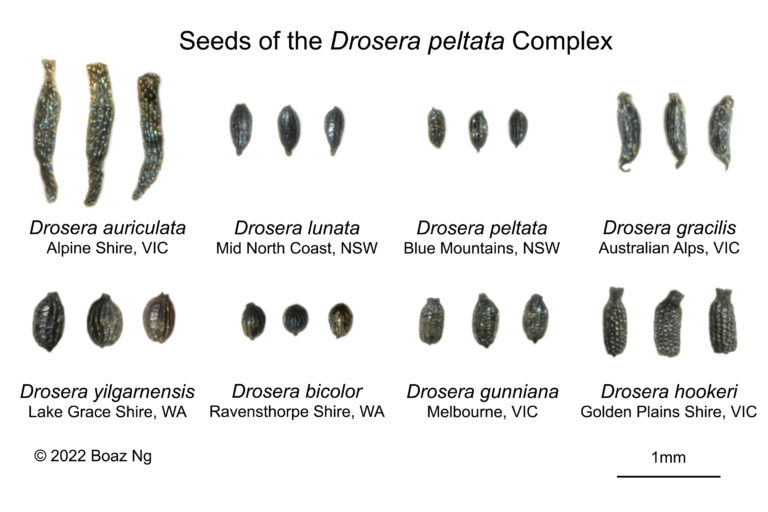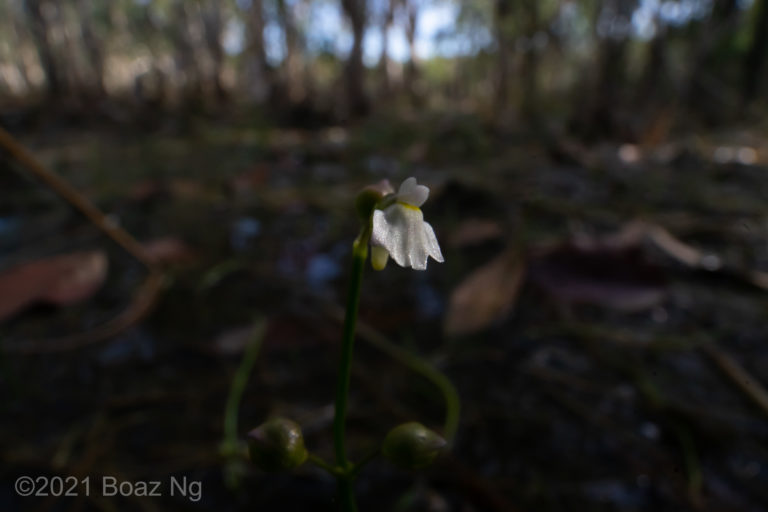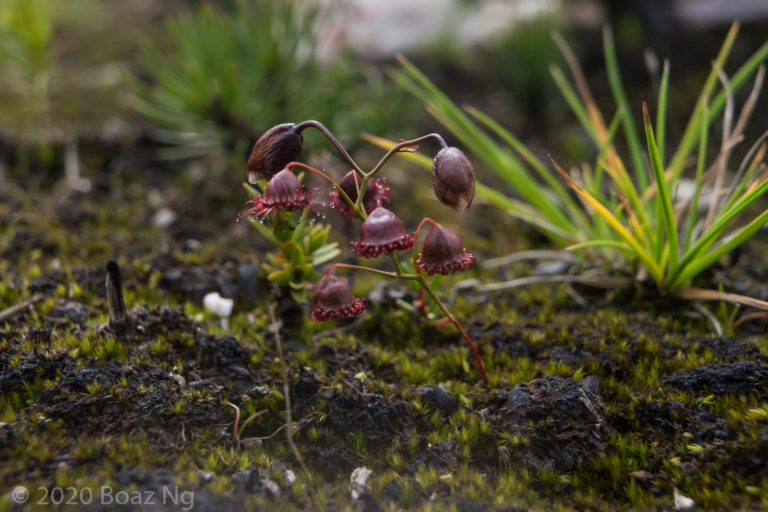The Drosera erythrorhiza complex consists of four closely related taxa (erythrorhiza, magna, collina, squamosa) and some intermediate forms that are widely distributed along coastal regions of Western Australia. In areas where the distribution of the taxa overlap, the plant populations are sometimes confusing to classify.
The type species, Drosera erythrorhiza is found in coastal regions and the inland forests on the west coast between around Lancelin and Busselton, as well as on the south coast spanning between Walpole and Hopetoun. The species has obovate to flabellate leaves, which typically grow up to 3-4 cm long. The number of leaves is typically few, around 3-5 in mature specimens. It grows in a broad range of habitats including heath, open woodland and moss aprons on granite outcrops. A distinguishing feature is that the species forms dense clonal colonies from numerous adventitious stolons each season.
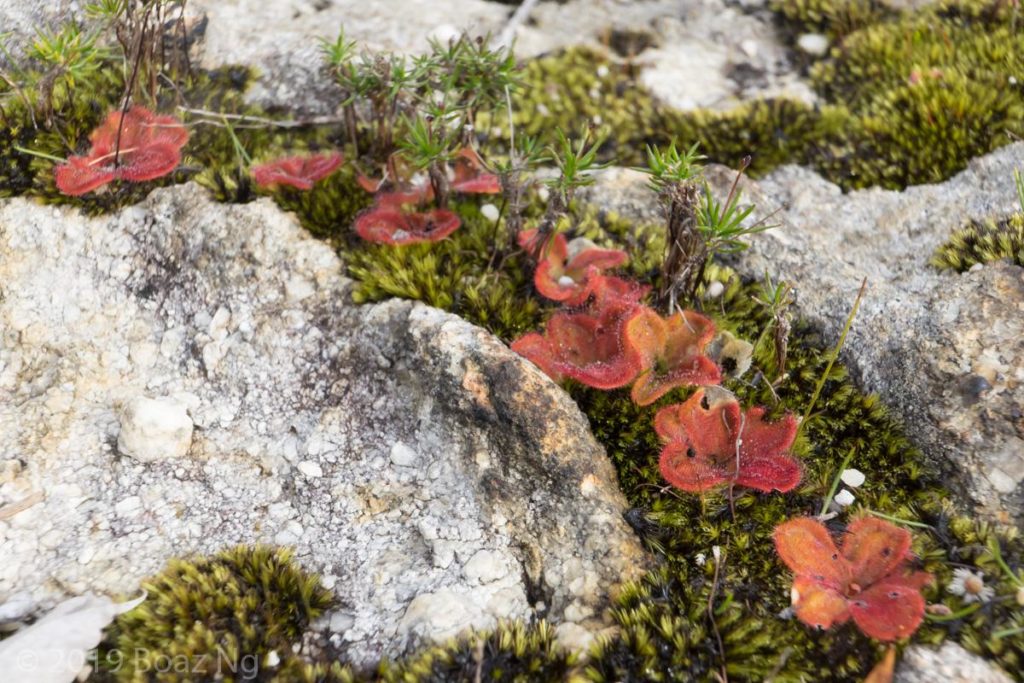
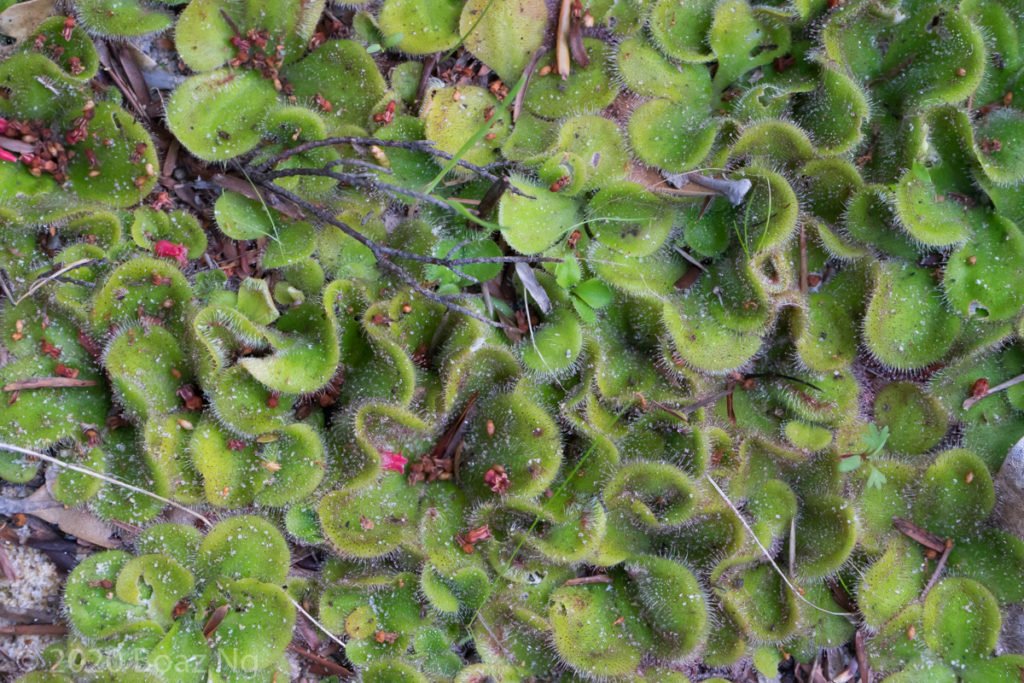
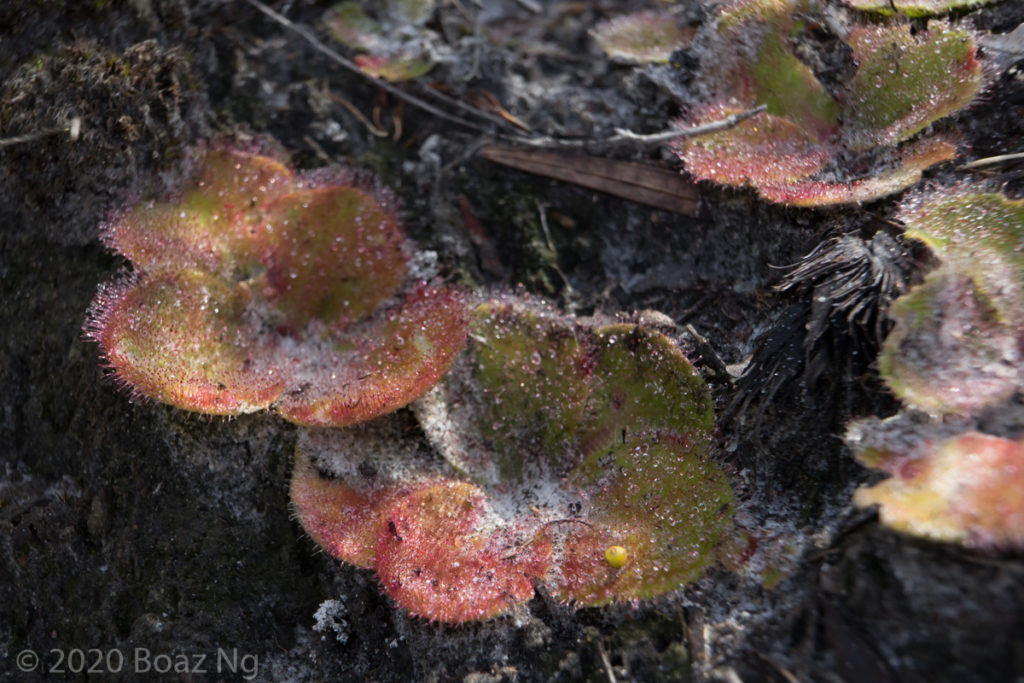
Drosera erythrorhiza in the Mount Lindesay National Park 
Drosera erythrorhiza north of Perth 
Drosera erythrorhiza in metropolitan Perth 
Drosera erythrorhiza near Walpole
The next species in the complex is Drosera magna. It grows from the northern end of the distribution for D. erythrorhiza and extends towards Jurien Bay. This species is very similar to D. erythrorhiza in leaf morphology, with broad obovate lamina. It is most readily distinguished from the type by its large leaves, which reach up to 6 cm long and number from 4-6. It also forms clonal colonies, although to a lesser extent than Drosera erythrorhiza. The species grows in deep silica sand in heathland, although this might be in part due to the fact that this ecosystem is predominant in the area. I have also observed the species growing in laterite rubble on a weathered hill.
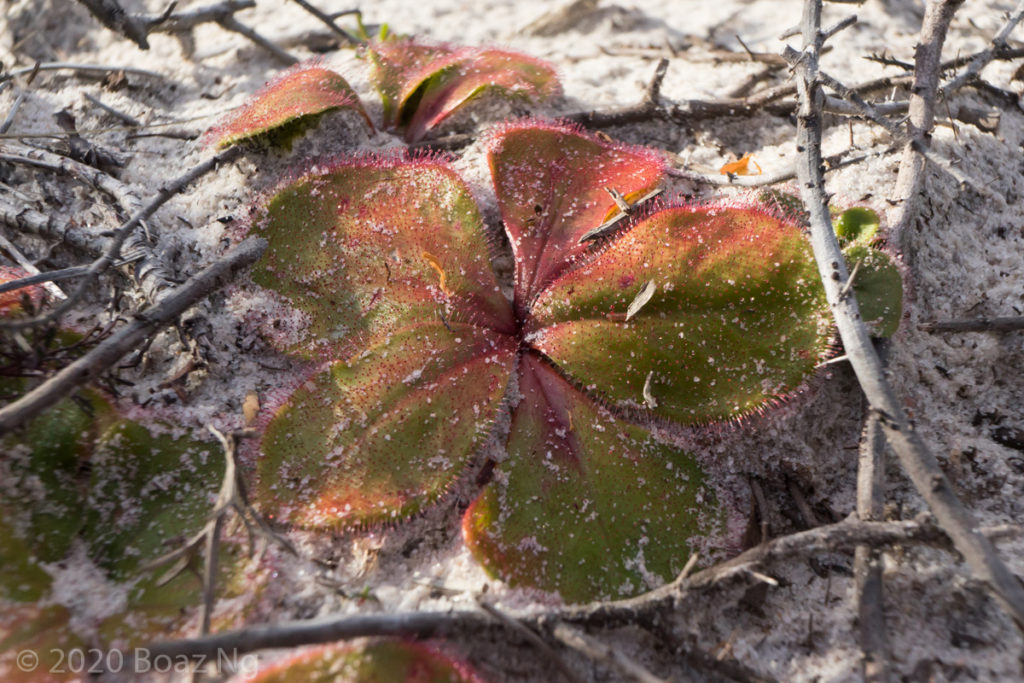
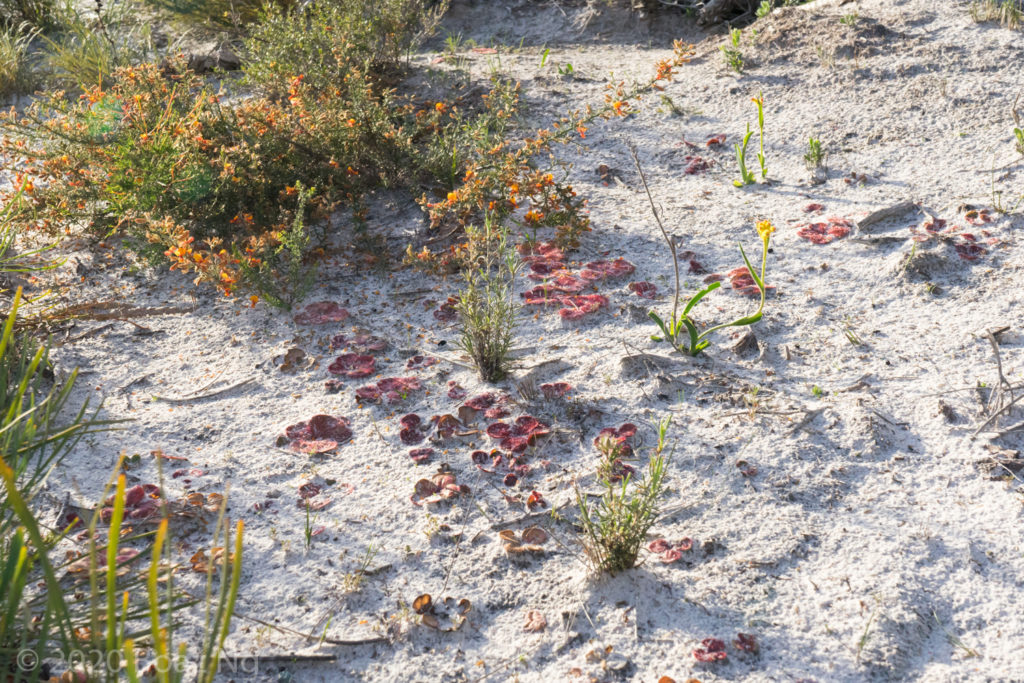

Drosera magna near Jurien Bay 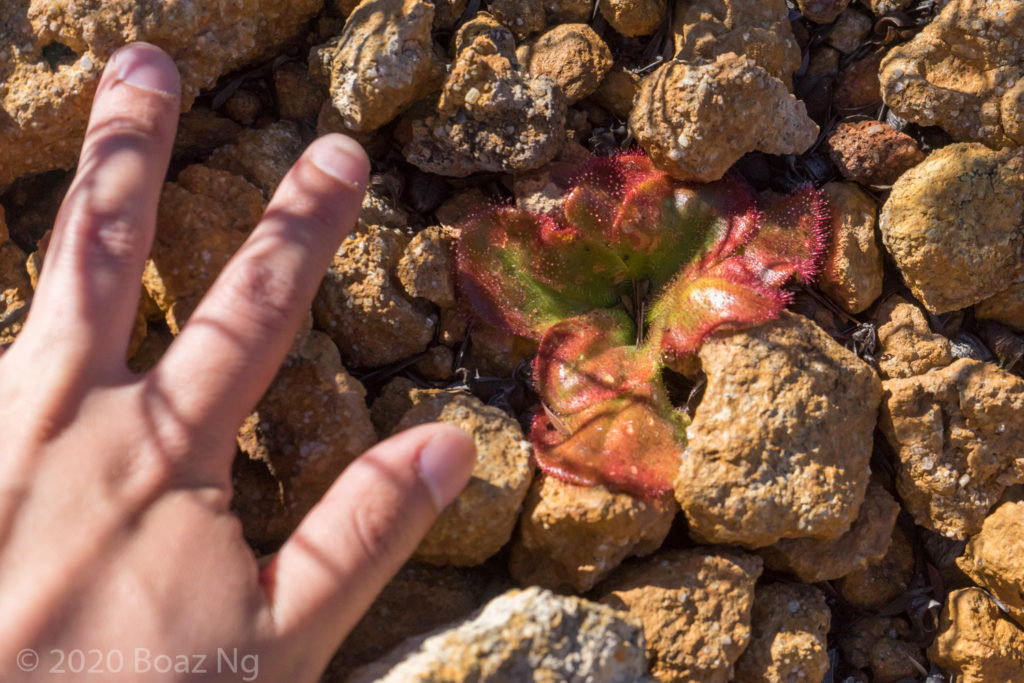
Drosera magna growing on a laterite hill east of Jurien Bay
In contrast to the previous two species, Drosera collina has narrowly obovate, elliptical or oblong laminae. The species often has many (up to 12) concurrent leaves of varying sizes and shapes and grows up to 12 cm in diameter. The specific epithet ‘collina’ means to grow on hills, referring to its habitat in the hills of the Darling Range, an uplifted region that runs parallel to the west coast. Unlike Drosera erythrorhiza and magna, it is absent from the coastal sand plains. It does not form dense colonies, occurring individually or in small groups.
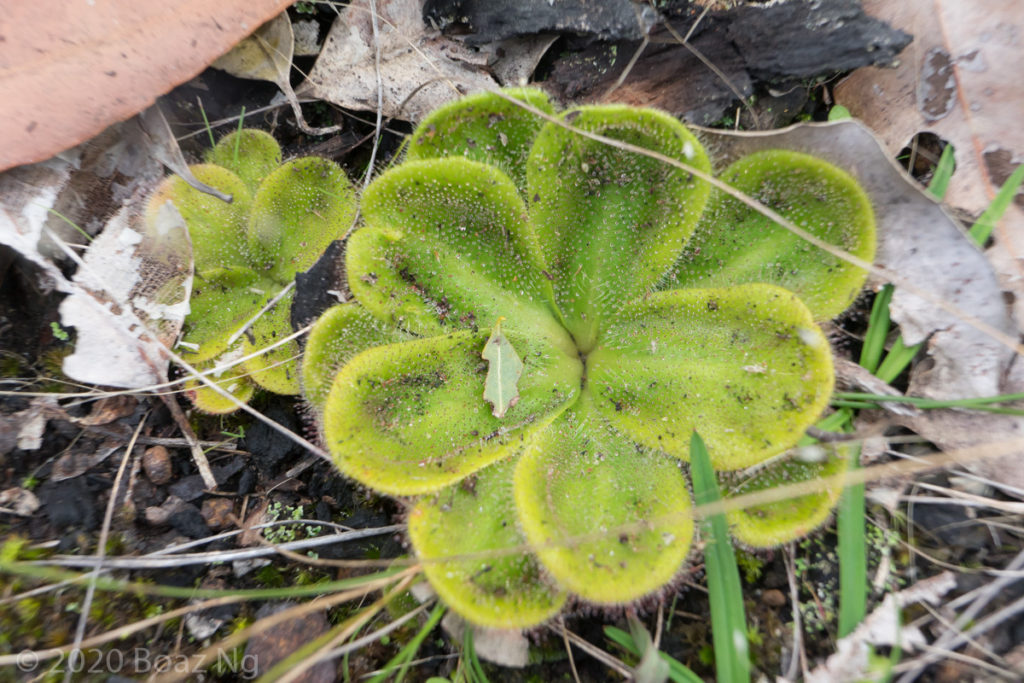
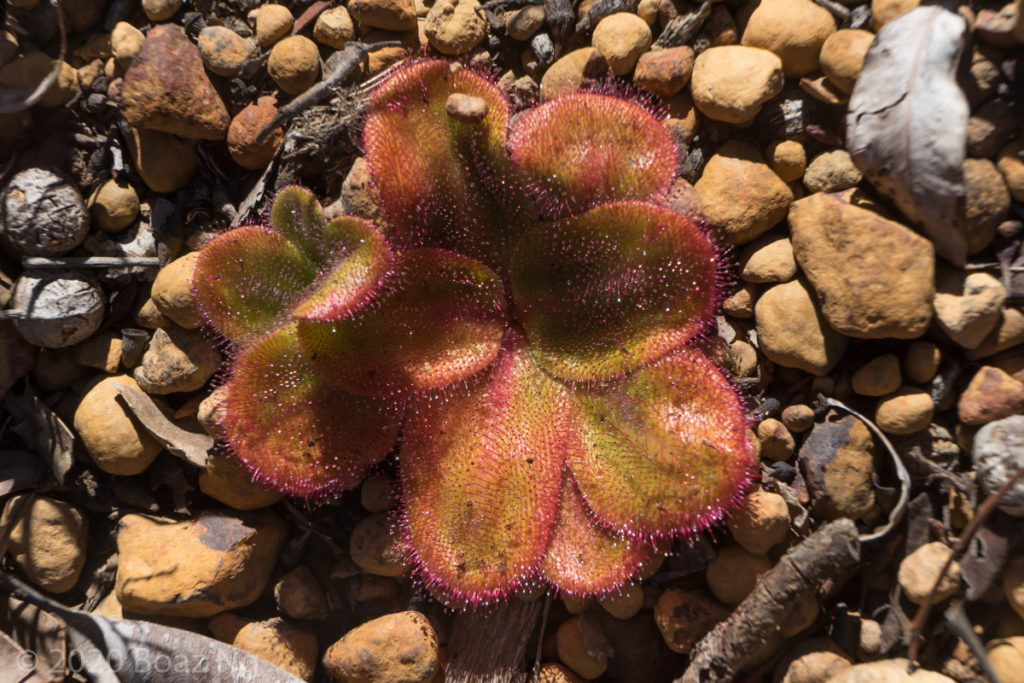
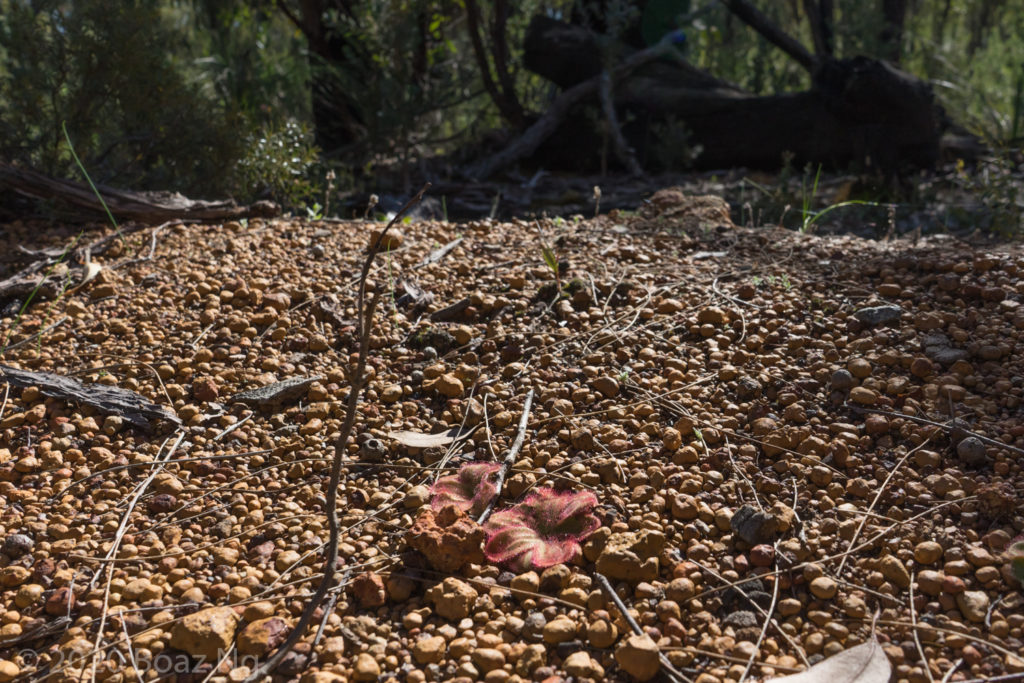
The last species in the complex is Drosera squamosa. It has a similar morphology to Drosera collina with obovate laminae but is generally smaller, with a diameter of up to 10 cm. The archetypal characteristic that differentiates this species is the bright red border around its leaves (although some specimens or populations confusingly do not have this border). It inhabits a range of habitats from peat on the edge of swamps and laterite and silica soils in the sclerophyll forests in the hills east of Perth. The official distribution for the plant is from the coast south of Perth stretching towards the east through the hills of the Darling Range and in the Fitzgerald River National Park region.
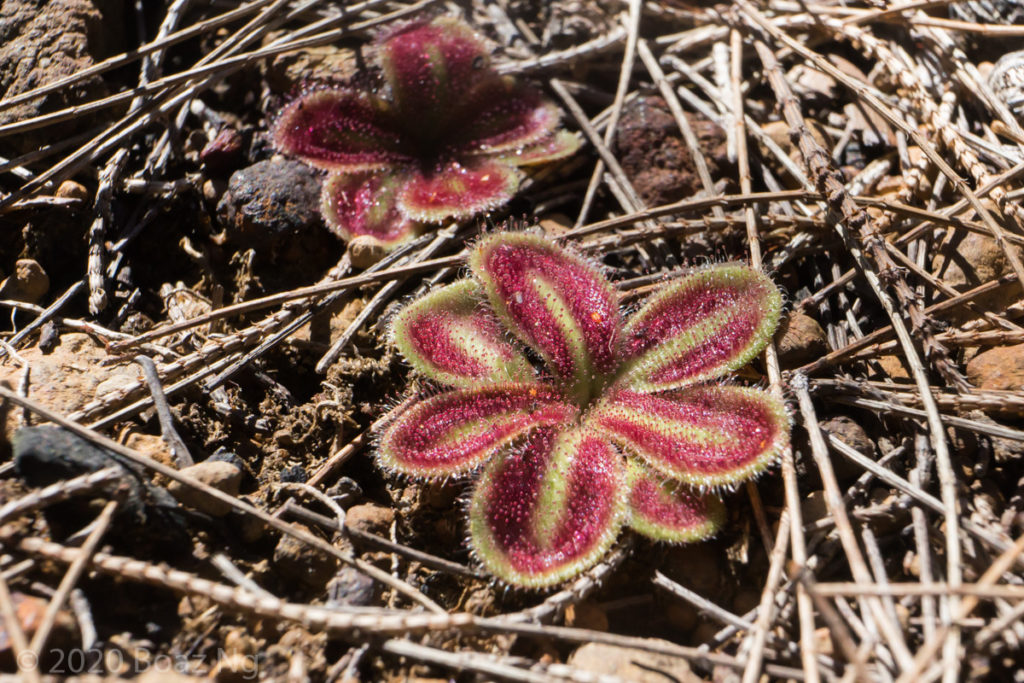
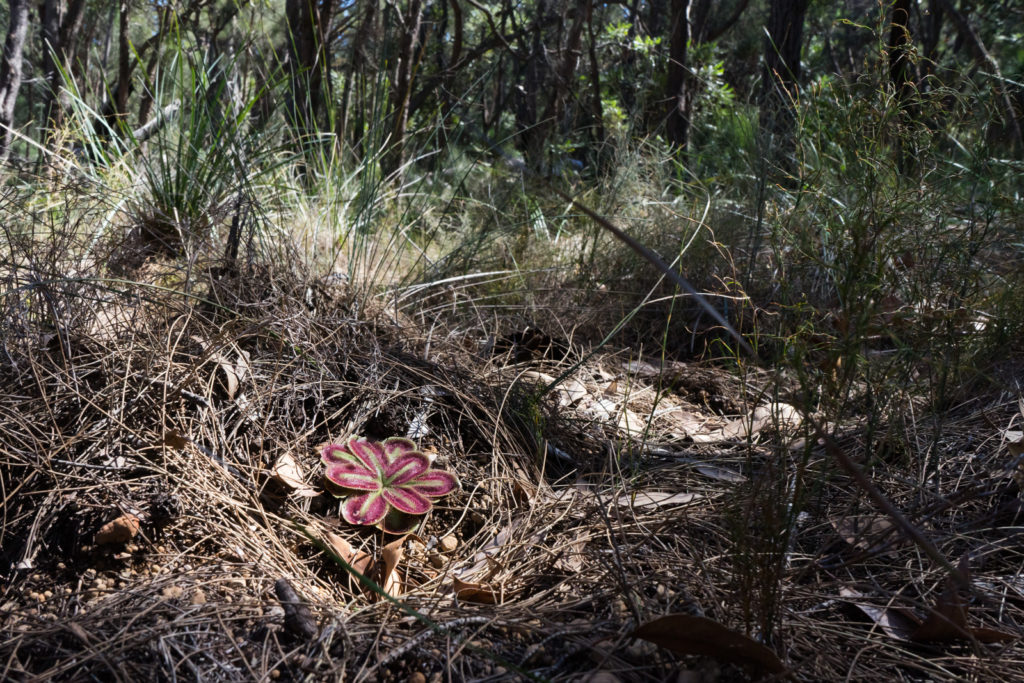
As a species complex, the lines between the different taxa are sometimes blurred. The distinctions that separate them were only relatively recently formalised by publication. There are sometimes intermediate forms and plants growing out of their official range that complicate things. Several examples are provided below:

Drosera aff squamosa at Walpole 
Drosera aff squamosa at Walpole
These plants growing on the edge of a swamp at Walpole have elongated leaves that exclude it as Drosera erythrorhiza sensu stricto. If I had to classify it, it would be most closely related to Drosera squamosa on account of its intermediate size, many leaves and red border (which confusingly is not always too apparent in some plants). However, it is not in the official range for the species, perhaps due to undersampling or the fact that there aren’t too many carnivorous plant enthusiasts making an official location record.
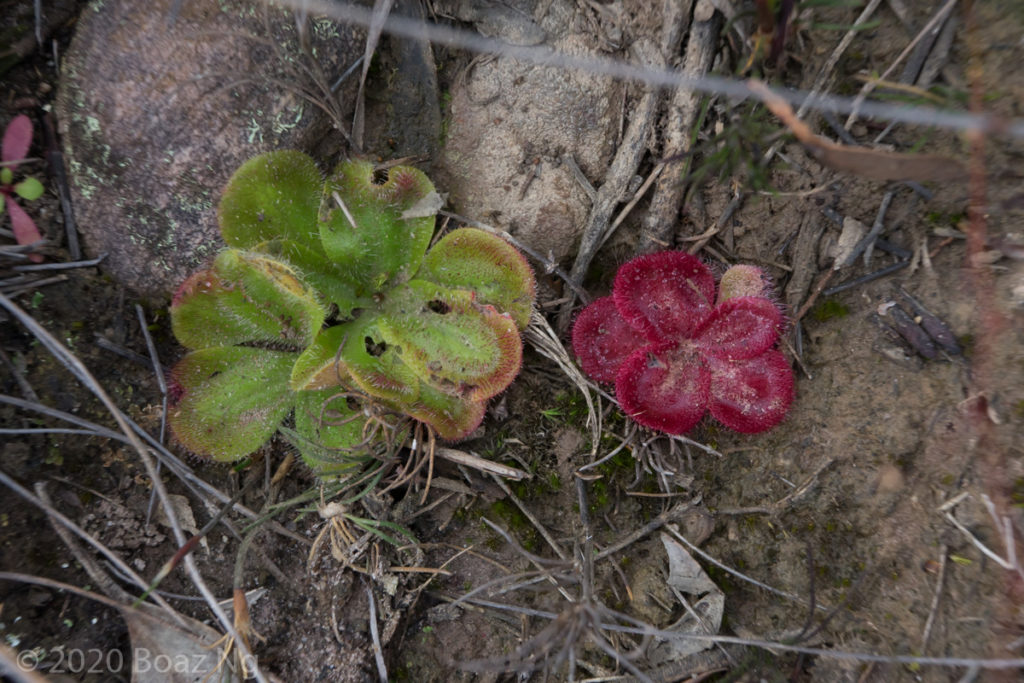
The Stirling Range is a mountainous area a bit inland from the South Coast. Growing on the lower slopes of Bluff Knoll were these plants, which have the elongated leaves characteristic of Drosera collina. Again, this was out of the official range for the species. This identification is made more likely by the niche differentiation between these plants and those growing in the lowland sand plains, which clearly resembled the typical Drosera erythrorhiza.
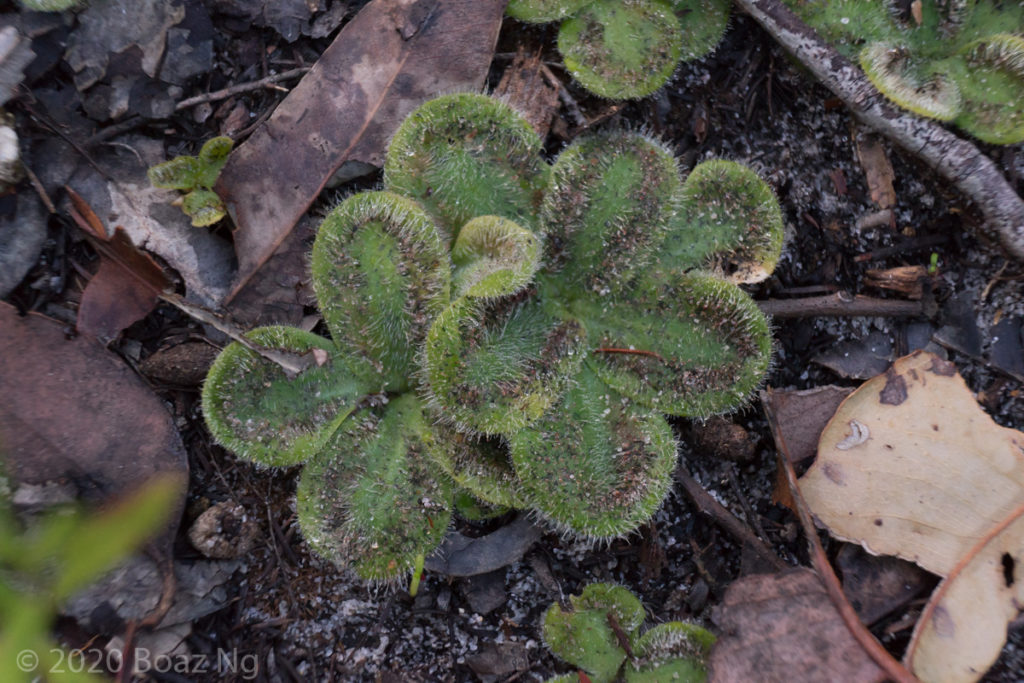
These plants in Bunbury have a leaf shape that is a bit too elongated to be Drosera erythrorhiza. The red band and moderate amount of leaves suggest some affinity to Drosera squamosa. It is however out of the official range for the latter species and forms large clonal colonies.
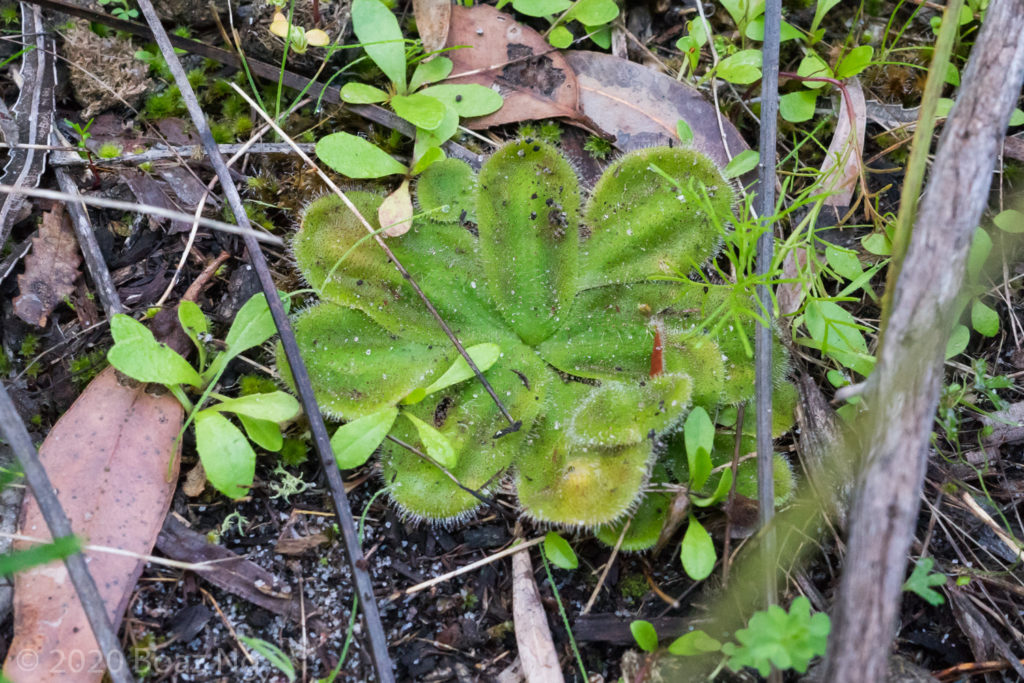
Drosera collina is supposed to be absent in the sandy soils of the Swan Coastal Plain, however, this plant in Bunbury clearly resembles it with its long numerous leaves.

